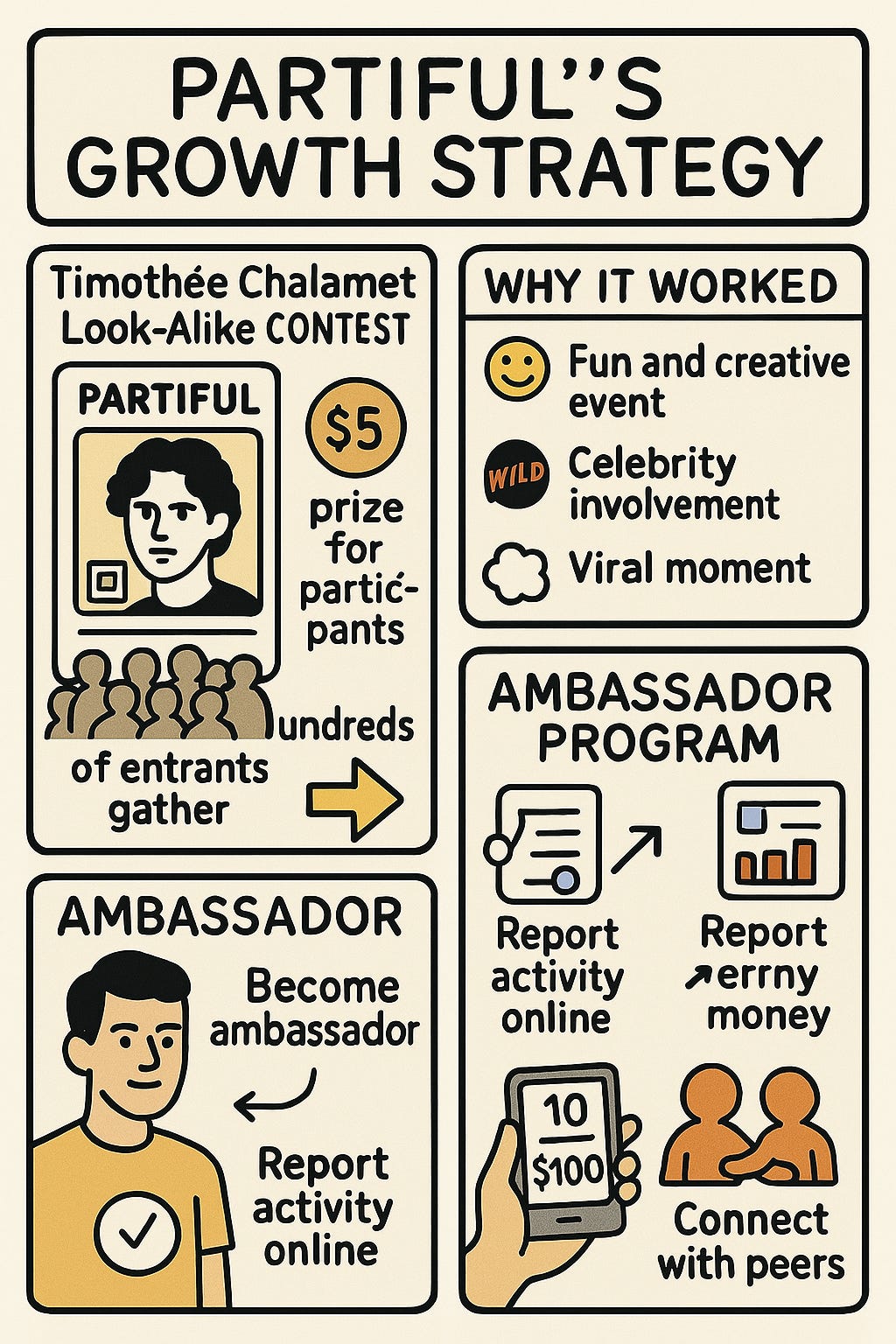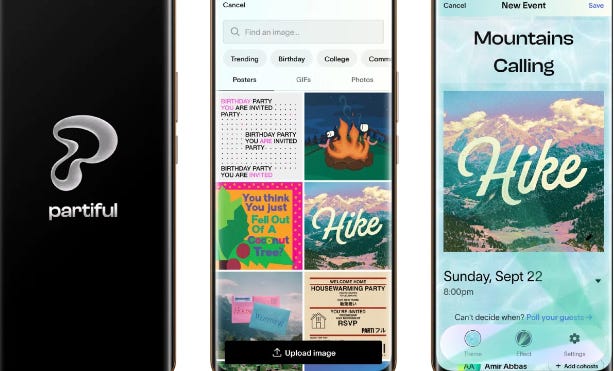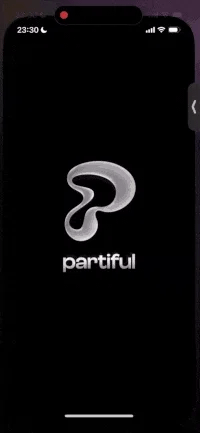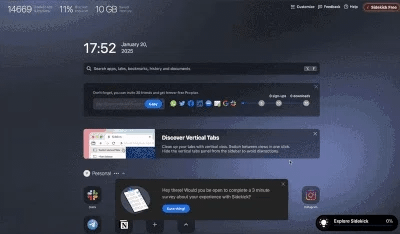How a Timothée Chalamet Look-Alike Contest Turned a Party App Into a Cultural Phenomenon
Partiful isn’t just helping Gen Z plan events—it’s reshaping how they express identity, build community, and go viral both online and off.
What Is Partiful?
At first glance, Partiful might resemble yet another entrant in the crowded landscape of event platforms—Luma, Eventbrite, and their ilk. But to see it that way is to miss what makes Partiful a quietly radical tool of social engineering.
Partiful is, on its surface, a party-planning app. But under the hood, it’s a friction-reducing mechanism for Generation Z’s fluid and often chaotic social behavior. Where previous generations defaulted to Facebook groups, messy iMessage threads, sprawling Discord servers, or the visual theater of Snapchat, Gen Z often finds itself lost in a maze of overlapping chats and social cues. Partiful carves a path out of that entropy.
With a neon-soaked interface and a sense of casual intimacy, Partiful reimagines the invitation not as a formal gesture, but as a cultural artifact—one that can be crafted in seconds and spread like a meme. It’s not just that users can build a party page in moments; it’s that doing so rewires how the event exists in their social ecosystem. Planning a gathering becomes less about logistics and more about signaling belonging.
Partiful reduces the transaction cost of social coordination. It replaces friction with fluency. And that, in an era of information overload and attention scarcity, may be its most profound achievement.
How it works?
To call Partiful merely an “event planning app” is to misunderstand its cultural role. A more accurate description might be: a tool for self-expression, masquerading as logistics. Its closest cousins aren’t Eventbrite or Evite, but Shelf, Airbuds, and NoPlace—apps that briefly capture the imagination of Gen Z not through utility, but through identity play. What these platforms offer, each in their own way, is a canvas: a way to say “this is who I am,” without ever having to say it out loud.
Partiful taps into that same social impulse. Its genius lies in repackaging the traditionally dull mechanics of planning into something performative. Creating an event on Partiful feels less like sending an invite and more like posting a TikTok—it’s meant to be seen, reacted to, reshared. The event becomes an extension of the host’s persona. And in that sense, Partiful isn’t just helping users gather their friends—it’s helping them narrate their social lives, one RSVP at a time.
Why Partiful Works
Keep reading with a 7-day free trial
Subscribe to Consumer App Lab to keep reading this post and get 7 days of free access to the full post archives.





